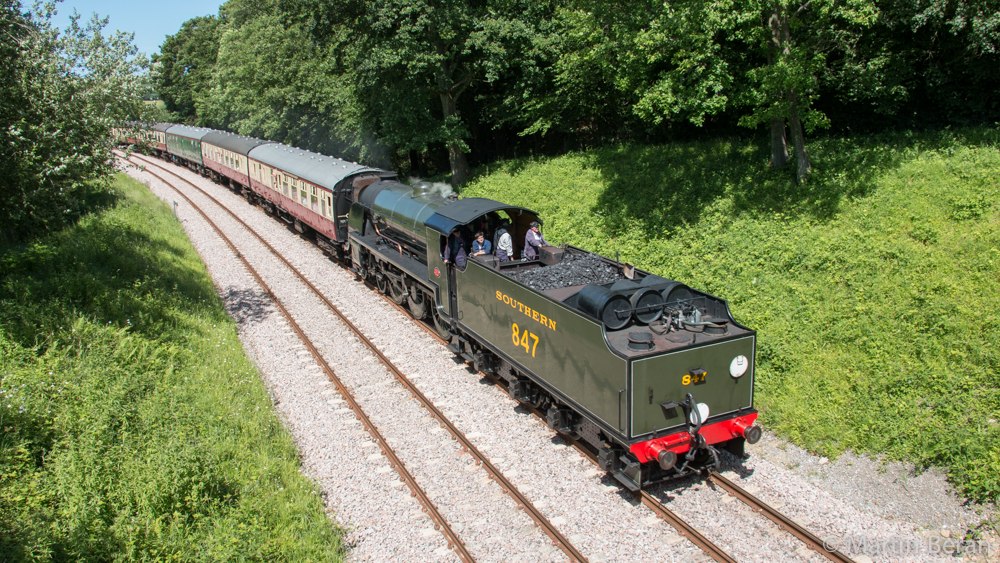
The Bluebell Railway
The British are well known for their restored heritage rail lines. The early advent of the steam engine as well as the general interest in preserving historical artifacts led to a vibrant collection of steam operated railways all over the U.K. The Bluebell Railway is maybe on of the best known featuring big, mainline steam action. Having seen this line featured on clips on Youtube, I decided to make it a destination on my tour.
A little bit of history
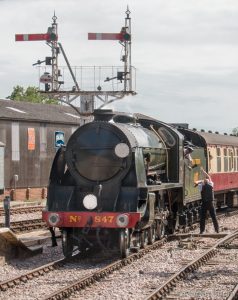
The Bluebell Railway was on of the first museum railways in the UK and got founded in the late 1950s after British Railways closed the line between East Grinstead to Lewes for good. Interestingly the original goal was to maintain rail passenger service for the locals. Unfortunately that did not work out but instead the Bluebell Railway was established as a volunteer operated museum line. Over the course of time the railway built up a notable collection of over 30 locomotives and numerous cars. Furthermore the group managed to get more than 11 miles of track in top operational condition and reestablished a connection to the British rail network in East Grinstead in 2013.
A day out on the Bluebell Rwy
I took the Southern train service from London Victoria station to East Grinstead. The ride takes about one hour navigating the suburbs of London and rolling through the lush hills of southern England. The train terminates at East Grinstead and it is a very short walk to the Northern Terminus of the Bluebell Railway. I got a day pass for £19.- ($25/€22) for as many rides up and down the line. It did not take long and the excited patrons heard the sound of a hard working steam locomotive in the distance.
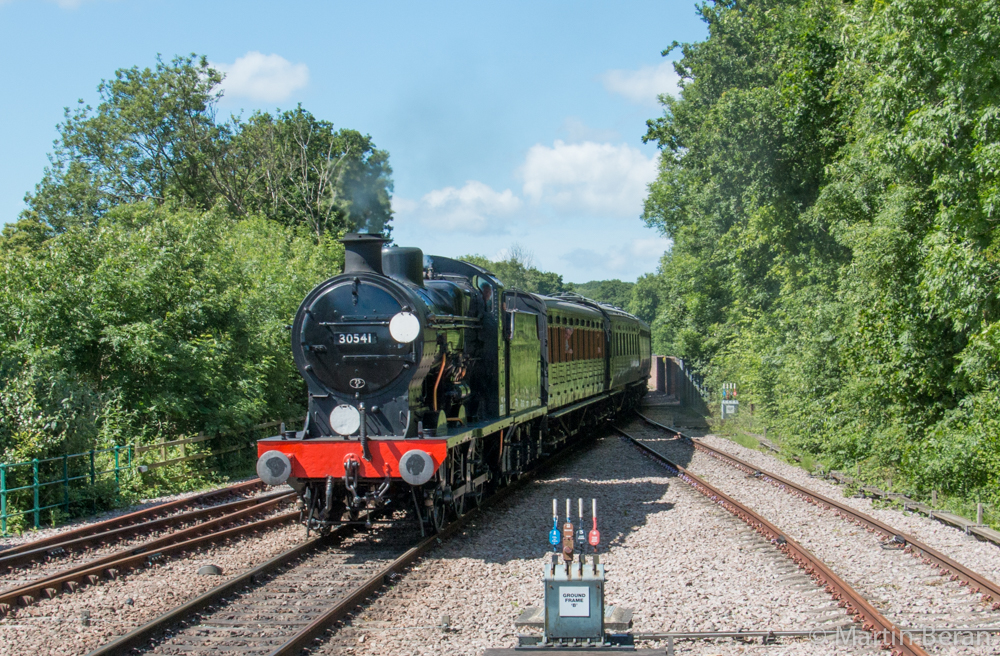
 After a run-around move by the engine the train is ready to depart back to Sheffield Park on the southern end of the Blue Bell Rwy. It takes the our train about 40 minutes for the train to reach the other terminus. The unhurried ride gives a good impression on the typical British railway design principles. In order to avoid sharp turns railroad engineers relied on deep cuts, bridges, viaducts and tunnels- all of which are also to be experienced on this line. Kingscote is a small intermediate stop followed by Horsted Keynes which housed the railways car shops as well as really nice station architecture. It will also act as the future terminal for a planned branch line. We briefly stop for a meet with a northbound train and after exchanging the track tokens we are on the move again. Its a special delight hearing the engine work hard to accelerate the consist out of the station!
After a run-around move by the engine the train is ready to depart back to Sheffield Park on the southern end of the Blue Bell Rwy. It takes the our train about 40 minutes for the train to reach the other terminus. The unhurried ride gives a good impression on the typical British railway design principles. In order to avoid sharp turns railroad engineers relied on deep cuts, bridges, viaducts and tunnels- all of which are also to be experienced on this line. Kingscote is a small intermediate stop followed by Horsted Keynes which housed the railways car shops as well as really nice station architecture. It will also act as the future terminal for a planned branch line. We briefly stop for a meet with a northbound train and after exchanging the track tokens we are on the move again. Its a special delight hearing the engine work hard to accelerate the consist out of the station!
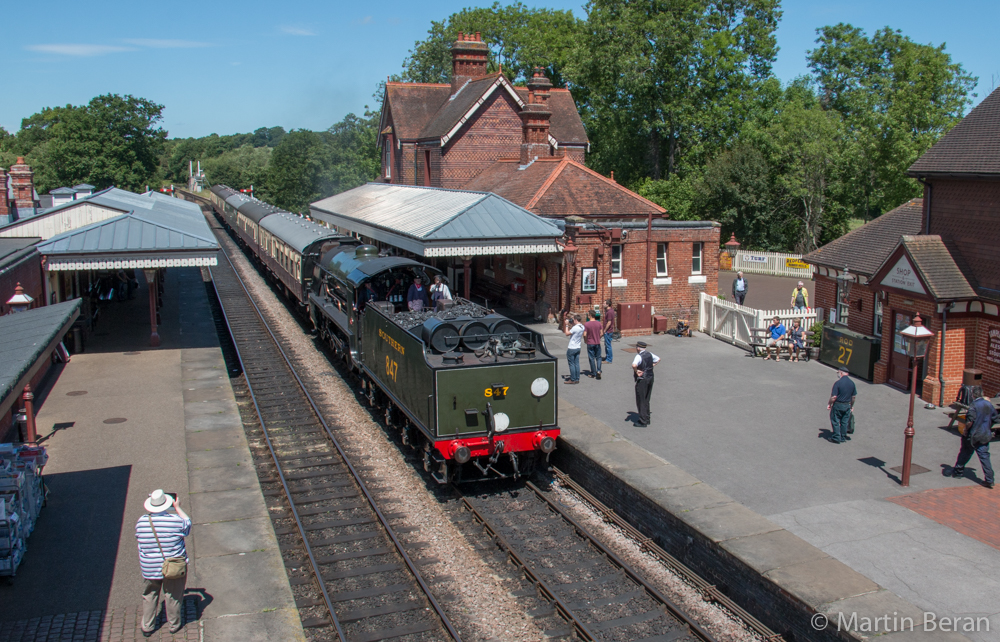
Sheffield Park
Sheffield Park serves main terminal featuring all necessary facilities to support the line like a deep, locomotive shops as well as a restaurant, gift shop and station building. I spend quite some time in Sheffield Park to explore the station area and watch switching moves performed by the steamers to get on the front end of the consist for another trip up to East Grinstead.
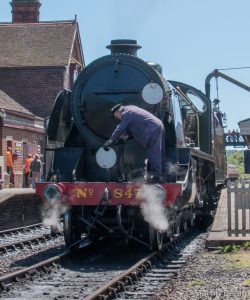
This is part of the magic of the Blue Bell- one can be really close to watch the action. The engine backs through the switches- then pulls up to take water at the column. While the tender is filled up, coal gets rearranged by the fire man and the front signals taken to correct end. Once all the preparation has been completed, the steamer conducts another forward-reverse move in order to reconnect with the train. All aboard! – and soon the next excursion is on its way. I choose to stay a little bit longer for a visit to the engine shed where the notable collection of steam locomotives waits for the next assignment. In the middle of all the impressive steam engines a lonely class 08 diesel shunter waits for its next assignment. I love those bulky, switchers with their design aimed for function rather than beauty! Right next to the shed is the Blue Bell’s locomotive shop. There is always some kind of restoration going on. It is quite impressive to see a stripped down engine undergoing serious maintenance work. Remember, this is an voltuneer operation and one can see enthusiast laboring doggedly on restoration projects.
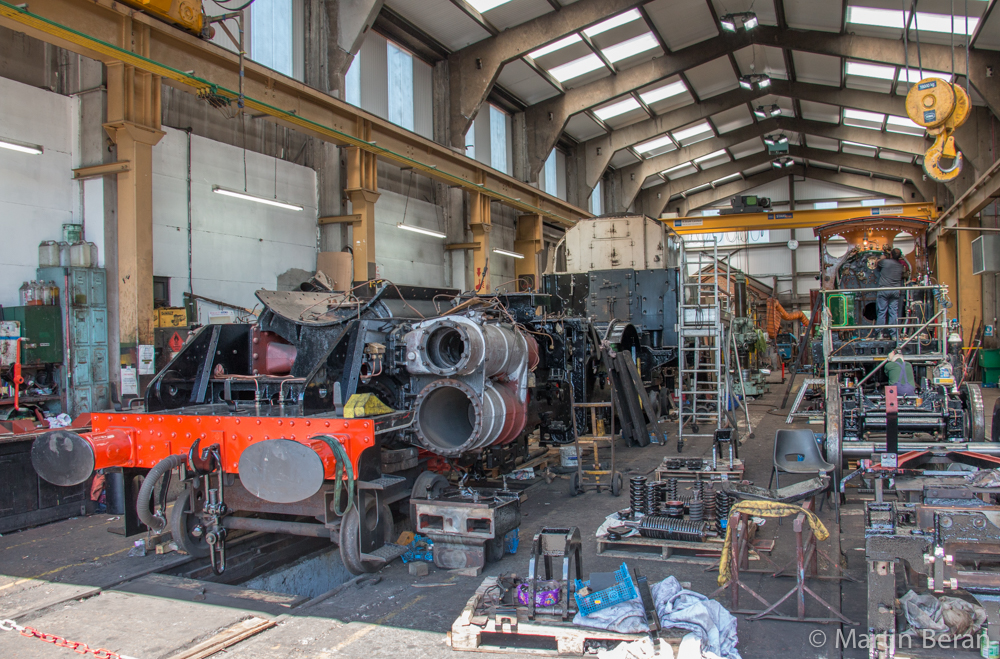
The Blue Bell Rwy operates every day from April to October with usually more than one train at a time running on weekends. It is a good idea to check the actual schedule on the Blue Bell website. My plan was to take the next service to Hosted Keynes. As there was some time to the departure I had lunch on the platform while absorbing the activity all around the station.
Hosted Keynes

This is maybe the most impressive station on the line! The Blue Bell team has restored the look and feel of a typical British country side stop of the 1920s. Also the are provides a good lookout point half a mile to the North which is easy to reach with a swift walk. The title picture has been taken from the overpass.
Conclusion – don’t miss this!
All in all the operation around this museum railway has a lot to offer. From families introducing the kids to the real “Thomas” to inveterate steam train buffs- everyone finds something to admire on this line.The avid railway photographer has a hard time capturing all the action and motives provided.
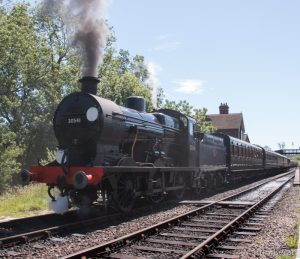
Only the light is a little bit challenging as the line runs pretty much North-South and the steamers smoke stacks usually point north and do not get turned at the end of each run. Therefore they run tender first towards Sheffield Park- in best photo light. From an operation point of view it does not matter. Speed is low and the typical British alignment of the line prevents a rough ride. But this practice is difficult if one looks for the classic rail-fan photo perspective as the camera faces towards the sun, especially when the weather is bright and sunny as it was during my visit (where are the clouds when you need them?). Anyways, I finished the day with a set of loaded SD cards as well as a lot of good memories. The Blue Bell Railway is defenitely worth the trip and I’ll be back next time I make it to England! I’m already toying with the idea of staying in the area for a while and renting a bike to follow the trains around. Because for me watching a train is even a little bit better than just riding a train.